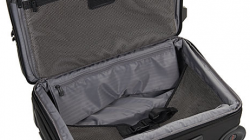I got an early look at United’s October issue of Hemispheres Sunday night during the last leg of my journey home. There was a good article on various destinations for off-peak travel that reminded me it’s about that time again.
Some of my favorite trips have been in off-peak seasons. Think of Hawaii in November or London in January. A big reason for off-peak travel is saving money.
Other times it’s less about the price than about the experience when I get there. Visiting Europe in the cooler months is awesome. There are fewer tourists, and the temperatures are much lower. I’m not going to London or Paris for a beach vacation, so I could not care less what the weather is like when I get there. In Seattle, it’s grey and cold most of the year anyway. The one time of year I don’t want to be traveling is summer, when it’s nice here. I use the other 10 months to go elsewhere.
I actually like the cold weather most of the time, depending on the destination. New York? Chicago? Texas? Europe? I would prefer to visit all of these places between November and March. I’ve always hated hot, humid weather. Singapore was a constant test of my resolve despite all the sights I enjoyed. I got heatstroke my first time in Chicago. I drank two gallons of water hiking in the Palo Duro Canyon. If I can’t be shirtless by the pool, then I want to be bundled up in a wool sweater walking against a brisk wind with my cappuccino.
Saving Money
Of course, these off-peak travel seasons are still a great way to save. When I went to Maui earlier this year in February, it was a holiday weekend with a lot of East Coast tourists willing to pay $400 a night to escape the snow. But if you go right now in October and November, the same 4-star hotels are going for under $250.
You’ve probably also noticed the recent fare sales from all parts of the country to Maui and Oahu. It’s still pretty nice in Hawaii any time of year, but people’s motivation for going currently isn’t as strong. Take advantage of that, and use the money you save to take another trip later.
There certain markets see very predictable fare reductions. Business class tickets to Europe are especially cheap around Thanksgiving (all the business travelers stay home), and paid coach tickets throughout winter and early spring can be half as much as in the peak summer season. Fares to Europe from the East Coast might actually come close to some tickets to California.
Some airlines like US Airways also offer significantly discounted off-peak awards. Instead of paying 100,000 miles for a normal business class award, I can spend only 60,000 from January 15 to February 28. That gets discounted by another 5,000 (to 55,000) thanks to my US Airways credit card. These are the same prices as saver coach awards the rest of the year! While you have to use US Airways-operated flights for off-peak awards, their Envoy business class product is one of the best.
If you’re like me and can tolerate, or even prefer, visiting some places during their off-peak seasons, then you won’t just enjoy your vacation better. You’ll save so much you can afford to take two vacations for the price of one. The sales have already started to appear, so think about some of your favorite destinations and whether they might be just as good, or just different, when experienced in a different season.
Where to Go?
The Hemispheres article mentions such places as Alaska in January (the aurora peaks in winter) and Dubai in July (shoppers will enjoy the special sales). We certainly enjoyed visiting Maui in February, when the whales are migrating–something that never happened during our typical family trips in the summer. This year we’re going to try to go to London, which Megan has never seen, but we’ll have to see what other ideas we come up with.
What about you? What are your favorite off-peak destinations for winter, summer, or any time of year?





